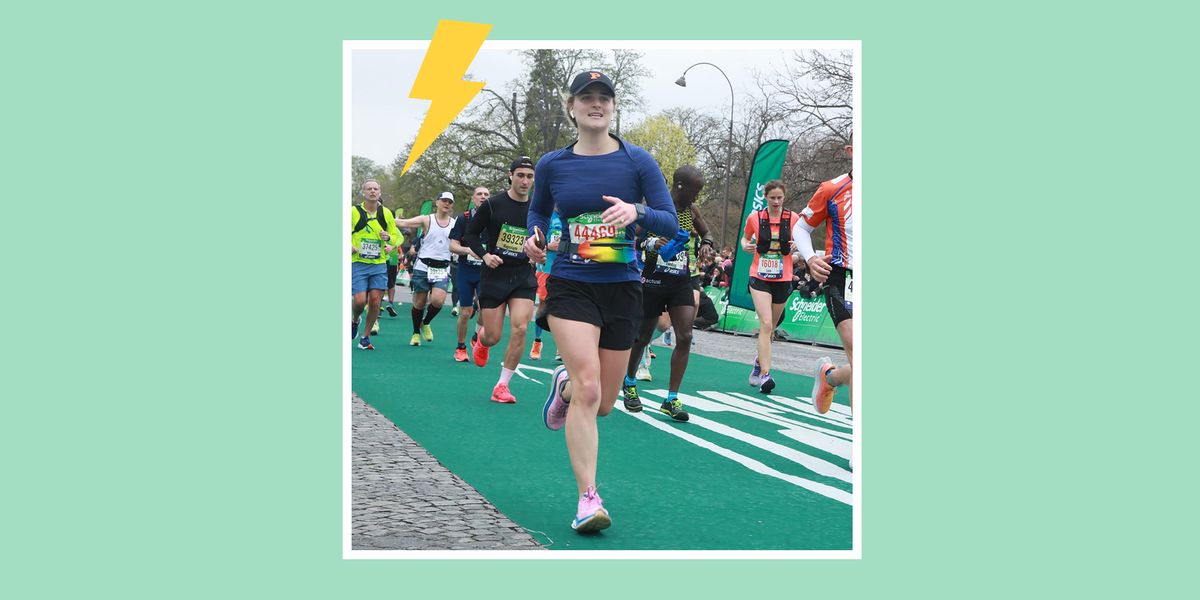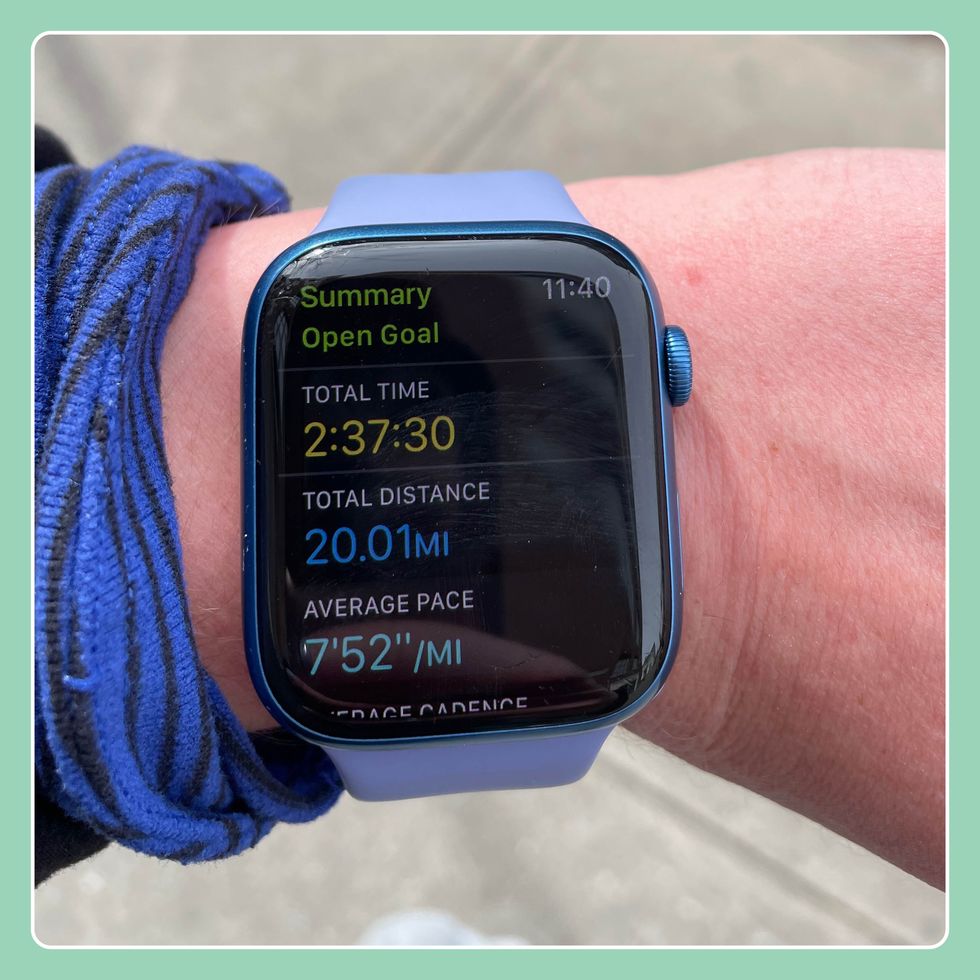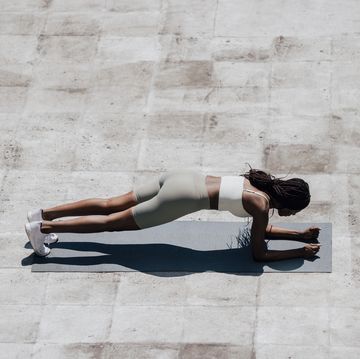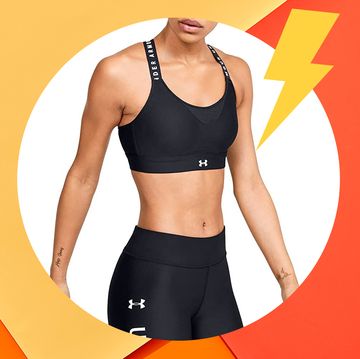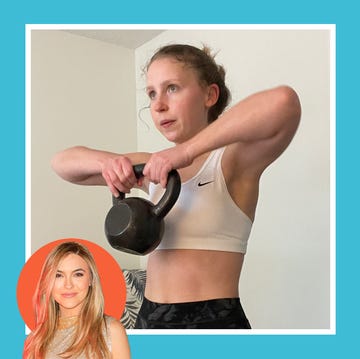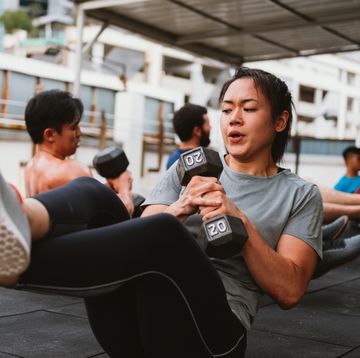The first time I ran a marathon, I was 21, struggling through my junior year of college, not really sure what I was doing, and certainly not training the way I should. I crossed the finish line with my knees covered in KT tape, happy to have finished the race without stopping or walking.
Nearly six years later, on a crisp, misty, April day, I ran across the finish line of the 2023 Paris Marathon feeling incredibly strong. I prepped with 18 weeks of hard training, with no knee-pain (plus, no KT tape this time!). And I had absolutely crushed my previous marathon time.
I finished the race at 3:31:15, booking it for the last 1.2 miles when I realized I *might* be able to hit 3 hours and 30 minutes flat (Boston Marathon qualifying time for my age group). I paced just under an 8-minute mile throughout the race, until the last few, dogged miles, where I ran around an 8:30 pace for two or three miles. While I didn't give myself a hard finish time, I had a goal aiming for an average 8-minute mile pace, which is the pace I trained to.
More From Women's Health

Back in 2017, when I ran the New York Marathon, I clocked a 4:47 marathon with an 11-minute pace, which means this time around, I'd hit a major PR, shaving over an hour and 15 minutes off my time, thanks to proper and rigorous preparation. And for that, I have to thank Peloton's Marathon Training Program.
How The Peloton Marathon Program Works
Peloton is so much more than trendy biking workout classes. A $12.99 monthly subscription gives you access to their app, which is loaded up with more strength, running, yoga, meditation, and biking programs than you could do in a lifetime.
The company's marathon training series is an 18-week program broken up into three 6-week segments, Part I, Part II, and Part III. There are six days of programmed classes (three running workouts, two strength and mobility classes, and one long run) and one rest day. When I wasn't traveling, I liked to do my long runs on Sundays, finishing the never-ending miles with a big breakfast burrito from my favorite East Village spot.
Along the way, I trained with four instructors, Robin Arzón, Becs Gentry, Matt Wilpers, Rebecca Kennedy and Andy Speer, who lead me through workouts and offered helpful training tips and tricks. The program is designed for first-time and veteran marathoners, alike.
When I "trained" in 2017, I was already logging around six miles of running at least five days a week (I ran cross country in high school). To train for the marathon, I just added an extra long run at the end of every week. It was way too much mileage without any strength or functional training, and looking back, it makes sense that my knees were not having *any* of it.
Here's a sample week from Week 13 of the Peloton program:
Day 1: Rest day
- yoga, stretching, long walk
Day 2: Tempo run
- 10 minute pre-run warm-up
- 45-minute tempo run with effort intervals (note: the effort level for running workouts is a choose-your-own-adventure, which means the total distance can vary. I usually landed around six miles)
Day 3: Strength for runners
- 30-minute strength and stability class
Day 4: Interval run
- 10 minute pre-run warm-up
- 60-minute marathon race prep with marathon pace intervals
Day 5: Strength for runners
- 30-minute strength and stability class
Day 6: Pop run
- 30-minute run with 5-minute warm-up and 24 minutes of running
Day 7: Long run
- 10 minute pre-run warm-up
- 16-mile long run
The long runs start at four miles and gradually increase in distance to 20. The program also integrates "pull-back" weeks that allowed my body time to recover and adjust.
The running portions of this program are designed to be done outside, but since it was the dead of winter in New York during the bulk of my training, I had to get creative and make tweaks.
As my cousin once told me, my one “serial killer” trait is that I can happily run on a treadmill for a very long time, so I did two of my 16-milers and a 14-miler inside. It was that or battling the 20 mph gusts on the West Side Highway and below-freezing temps.
I also occasionally added a 20 to 30-minute easy elliptical or walk before the strength workouts to get my heart rate up while minimizing limiting impact on my knees.
The Peloton marathon training program taught me to trust my body.
Following a solid training plan was key to my race success, but a training program that allowed me to trust my body was even more essential.
The thought of running 26.2 miles at an 8-minute pace was terrifying to me up until I finished my longest 20-mile training run in Central Park. Afterwards, looking at the steady pace on my Apple Watch, I realized that yes, I really could run a marathon at this speed. My body had settled into the cadence on my long runs, and while it was certainly tiring, it wasn’t impossible. All I had to do was just keep going.
Mind over matter. It’s a phrase that is used often in my family, and also a mantra in the Peloton community. And as any marathoner can tell you, the biggest hurdle to finishing 26.2 is that little organ between your ears telling you, "You're tired," and "You can't possibly hold this cadence." Peloton trainers know this, so the classes don’t just build muscle, they build mental strength and endurance.
The instructors use a rate of perceived exertion (RPE) to gauge your effort pushes during runs—the training is designed to be done outside without a treadmill to guide you. For example: “This tempo pace should feel like a 7 out of 10” or, “You should be at a 2 right now while you warm up.”
This was helpful in so many ways, but mostly because it met me exactly where I was. Long day at work? Give us your best 7. Getting stronger as the weeks go by? Give us your best 7. While that number varied, the program taught me to trust my body, listen to what it was telling me, and give what I could for each workout.
So, I let my body decide what a 7 or a 2 or my marathon pace felt like, instead of relying on what I thought it “should" be.
The program also hones your ability to hold harder, faster paces for longer and longer intervals. In the first few weeks, you hold your faster tempo pace for just three or four minute intervals, max. By the last few weeks, it’s 19 minutes or even 22 minutes at a time. I learned how to breathe through the pain, built my stamina with faster runs, and actually improved my heart rate variability (the time interval between heart beats) all at the same time.
As I laced up for my longer and longer runs, I reminded myself that while I had a goal pace, if I couldn't hold it that week, that was okay. And there were definitely times when I didn’t hit my goal, either from sheer life exhaustion, a cold, or bad night's sleep.
The functional and strength training classes saved my knees.
Back in 2017, I never made it beyond mile 16 during my training runs because my knees were in a lot of pain. Specifically, my quads and patellar muscles weren't strong enough, and my kneecap would slide around. My grandfather, an orthopedic surgeon who specializes in knee and hip replacements, encouraged my stubborn dedication to training, but told me he thought it was a bad idea to run with my knees protesting so much. So, instead of logging longer routes, I began cross-training and used enough KT tape on race day to give bionic woman a run for her money.
In 2023, I had no injuries, tweaks, or unnatural aches and pains throughout my training and the race itself. And I credit that almost entirely to the twice-weekly functional and strength training classes, and the carefully curated mileage on running days. These strength classes focused on hip, knee, and ankle strength, with moves like lunges, calf-raises, clamshells, and goblet squats.
Yes, the classes felt slow at times. I finished with barely a sheen of sweat. But they worked for me, and they’re worth it. Any deadlift PRs can wait until after the marathon.
I prioritized consistency over perfection.
Life was super hectic during training. I was traveling a lot, got engaged (!), and was really busy at work. So, while I did my best to follow the program as closely as possible, I gave myself grace when life got in the way.
There were missed workouts and skipped classes, but I prioritized the long runs each week (even if I had to reschedule them) and incorporated movement into my day when I couldn't make it to the gym.
I cut alcohol for over a month before the race.
Yup. It’s true. Cutting out the booze really, really does make a difference. These programmed workouts are no joke. They're truly designed to push you, and they did. I wanted to do everything I could to keep my body at the top of its game for the final five to six weeks, and it was key to my success.
Without alcohol, I was energized for weekday and weekend runs alike (which were my most important ones!). I got really good sleep leading up to the race. Was it hard not drinking wine in France? Yes. Was it worth it? Also, yes.
While I loved the program as a whole, I have a few critiques.
Since workouts are broken into three separate training segments (Part I, II, and III), that meant I'd be listening to the same workout audio and instructor banter when the class repeated during that segment.
One change that would enhance the program is a written description of the workouts beyond a general outline, including interval times and effort levels. That way, if I wanted to skip the stories and songs I've already heard, I could follow the same workout plan on my own.
This same critique goes for the 10-minute warm-up classes, which were scheduled before each tempo, marathon pace, and long run. By the time I reached Week 6, I could sing along to the music—I’d heard it so many times already. By Week 18, I needed a break.
While I'm certainly glad to have those long, hard 18 weeks behind me now, running over that finish line with 3:31:15 blinking on my watch was worth every mile along the way.
Currie Engel is the associate news editor at Women's Health. She previously worked as an award-winning local reporter specializing in health investigations and features, and as a researcher at Time magazine.
